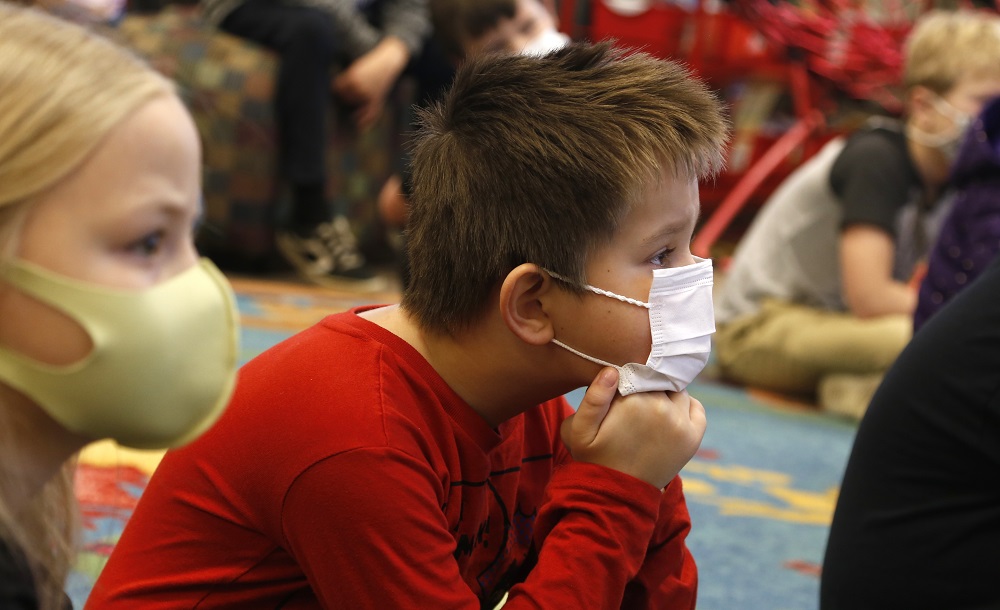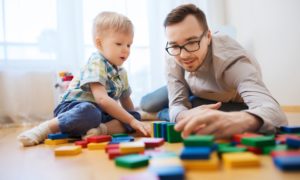During Kristi King’s first year as principal of Lister Elementary in Tacoma, Washington, she received more than 100 phone calls a day for disruptive student behavior.
King took over Lister Elementary in 2016 when it had a reputation as a troubled and sometimes violent school. Teachers told King they were afraid to walk their classes down the hall because a fight might break out.
“It was exhausting. It was hard. We were not feeling successful,” King said of that first year on the job.
King led a rigorous effort over the ensuing years to transform the school that included incorporating social and emotional lessons into the school day and weeding out what she said were unmotivated teachers and low-quality afterschool providers.
Almost seven years later, King said those efforts have paid off, and Lister Elementary has gone from a school that punished kids who misbehaved to one that uses disruptions as learning opportunities. Lister today is a radically more positive educational experience for the students and educators, she said.
“We went from 153 suspensions my first year to now single digits,” King said. And instead of fielding an unmanageable number of student disruption calls a day, she said she now gets just a few.
Social and emotional learning has emerged from the pandemic as a top priority for many schools and afterschool and summer programs in addressing students’ mental health and well-being. While many afterschool providers and educators tout the benefits of social and emotional learning, how to actually build a curriculum and teach it effectively to students isn’t well understood.
Lister Elementary is one of six case studies in a new report by RAND Corporation that aims to answer some of the fundamental questions schools and out-of-school programs might have on how to structure and run a social-emotional learning program for kids. The report was funded by the Wallace Foundation, which is also a funder of the Center for Sustainable Journalism, the publisher of Youth Today.
Catherine Augustine, one of the co-authors and an out-of-school-time researcher at RAND, said the step-by-step descriptions of real-life examples in the report are especially useful for afterschool and summer programs, which generally have fewer resources and less experience than schools in delivering social and emotional learning.
“There’s a lot of research on the benefits of social and emotional learning and the outcomes, which is great because that provides the rationale for doing it in the first place, but there is not a lot of, ‘Here’s how it can actually look on the ground,'” Augustine said.
In addition to Lister Elementary in Tacoma, researchers published a series of in-depth case studies on partnerships between elementary schools and afterschool providers in Boston; Dallas; Denver; Palm Beach County, Florida and Tulsa.
But Lister Elementary was unique in that it was the only case study in which the school didn’t have pre-existing afterschool partners at the onset of their social and emotional effort.
The rationale for schools partnering with out-of-school time programs is to reinforce the same concepts students were learning in school, Augustine said.
Students might begin the school day with a mood meter, identifying how they are feeling from a color wheel and then possibly doing an exercise around it. Similarly, when students are attending afterschool programs, they would also begin with a mood circle or mood thermometer, fortifying skills for recognizing and dealing with their emotions.
Augustine said the point of the report is to show that “instilling social and emotional competencies in students is possible,” and offer “concrete ideas on how to do this.”
Augustine cautioned it’s too soon to definitively say whether the students in their study who attended social and emotional lessons both in school and afterschool had improved learning and behavioral outcomes.
“I think the jury’s still out on effectiveness, who it’s effective for or how it’s effectively implemented,” she said. She and her co-researchers are still sifting through the data and will have better answers soon.
Of course, she added, there were self-reports from teachers recounting they had better relationships with students, the climate within the school had improved and the students were disruptive less often.
Although all the communities featured in the case studies were free to choose the areas they wanted to focus on — such as teamwork, collaboration, skills, leadership, confidence, efficacy or emotion regulation — Augustine said they all chose to begin with the latter, helping students identify and manage their emotions.
Teaching students to recognize their own and others’ emotions can lead to greater empathy and improved relationships, Augustine said, while regulating emotions diffuses anger and frustration in and out of the classroom.
But as schools and programs rolled out these lessons to students, they realized that some of the teachers had their own mental health challenges and lacked the skills to handle their emotions. Augustine said It’s both “inauthentic and not very effective” to teach social and emotional learning if the educator can’t control his or her temper and form positive relationships with students.
In these instances, schools either slowed down social and emotional lessons or stopped them altogether and pivoted to first focus on addressing the instructors’ emotional maturity and mental wellness, Augustine said.
In Tacoma, King credits much of the success of Lister Elementary’s social and emotional programs to partnering with the right afterschool providers. Not long after becoming principal, King said she “cleared out” all the community-based programs from the school, as part of the larger overhaul she had undertaken. The plan was that once the school was more stable and social and emotional learning was underway, she would bring in a fresh slate of afterschool providers.
The following year, she bought back afterschool providers but only the ones that passed a rigorous vetting process. Successful programs, King said, were adept at building relationships with students. Rather than disciplining students punitively when they were disruptive or troublesome with suspension, expulsion, loss of recess, or other types of negative consequences, these programs focused on student accountability and repairing any harm done.
“We’re in a very urban area and we have a significant amount of unexpected behaviors,” King said. “So, the shift from the punitive or pound of flesh mentality to the restorative mentality is really important.”
***
Brian Rinker is a San Francisco-based freelance writer and journalist. He covers public health, child welfare, digital health, startups and venture capital. His work has been published by Kaiser Health News, Health Affairs, The Atlantic, Men’s Health and San Francisco Business Times. Brian received master’s degrees in journalism and public health from UC Berkeley.






























